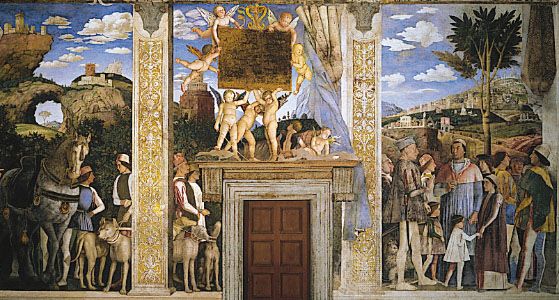
Pompeii Painting Identified as Original Work by Andrea Mantegna

# Lost Mantegna Painting Rediscovered: A Renaissance Treasure Resurfaces
A long-lost painting by Renaissance master **Andrea Mantegna**, depicting **Christ’s descent from the cross (“Deposition of Christ”)**, has been identified and restored after centuries in obscurity. Recently rediscovered in a church in **Pompeii**, the artwork has undergone meticulous restoration and is now on display at the **Vatican Museums** for a limited three-month exhibition.
This remarkable discovery sheds new light on Mantegna’s artistic legacy and Renaissance-era religious commissions.
## A Journey from Obscurity to the Vatican
The painting was found in **poor condition** at the **Sanctuary of the Blessed Virgin of the Rosary in Pompeii**, where it remained unnoticed for centuries. Its last known historical reference dated back to the **16th century**, when records mentioned a similar artwork at the **Basilica of San Domenico Maggiore in Naples**. However, no documentation existed about its transfer, leading scholars to believe it had been lost to history.
The painting gained renewed attention when it appeared in a **digitized Vatican inventory** of ecclesiastical artworks in Italy. Art historian **Stefano De Mieri**, a professor at Suor Orsola Benincasa University in Naples, recognized the possibility that this was an original Mantegna piece in 2020. After reviewing it in person in 2021, he found that numerous restorations had altered the work over time.
## The Restoration Process
Once identified as a possible **Mantegna original**, the artwork was moved to **Rome in 2022** for detailed conservation and scholarly research. Experts at the **Vatican Museum’s laboratories** conducted:
– **Non-invasive diagnostic imagery** to uncover underlying details and stylistic elements.
– **Research into historical records** and known Mantegna works.
– **Careful removal of excessive overpainting and damage** from earlier restorations.
After extensive study, restoration, and comparison with Mantegna’s signature artistic techniques, specialists unanimously confirmed its **authenticity in 2022**. However, the announcement was only officially made earlier this year.
## A Unique Masterpiece in Mantegna’s Oeuvre
Curators note that the **Deposition of Christ** exhibits **classic Renaissance influences**, with clear references to **ancient Roman art**, a hallmark of Mantegna’s style.
According to **Fabrizio Biferali**, curator of Renaissance Arts at the Vatican Museums, the artwork’s:
> “iconography is linked to Renaissance models and the artist’s typical classicism, with references to antiquity that make it unique in Mantegna’s production.”
The painting dates back to **roughly 1496–1501**, during Mantegna’s late career, further enriching his known body of work.
## Temporary Exhibition and Return to Pompeii
The painting is now on display in **Room 17 of the Pinacoteca, Vatican Museums**, where visitors can admire Mantegna’s striking composition up close.
After the exhibition ends, it will be returned to the **Sanctuary in Pompeii**, before being permanently housed at the **Diocesan Museum**, ensuring its preservation and accessibility to future generations.
## A Major Rediscovery in Art History
The unearthing of this **long-lost masterpiece** represents one of the most significant **Renaissance art discoveries in recent years**. It highlights the power of **digital cataloging, expert analysis, and careful restoration** in reviving forgotten treasures.
Mantegna’s **Deposition of Christ** now takes its rightful place among the many Renaissance masterpieces, offering art lovers a rare chance to witness history rediscovered.
—
💡 **Did you enjoy this article?** Consider supporting arts journalism to help uncover and share more incredible stories from art history.